Forsmark's mill in Roslagen is one of the many beautiful Walloon mills in the area. Iron was once produced here, and in the 17th century the Walloons came from Belgium to improve production. Today the mill is a great place to visit with historic buildings, an English park, a restaurant and a café.
Table of contents
Forsmark's mill
When you hear the word 'Forsmark', you may first think of the nuclear power plant, which is located nearby and operated by the same owner, Forsmarks Kraftgrupp. At Forsmark Mill, however, nothing reminds you of high-tech nuclear power. On the contrary, it is surrounded by history and beautiful nature. We made a visit with the motorhome and had a really nice day.
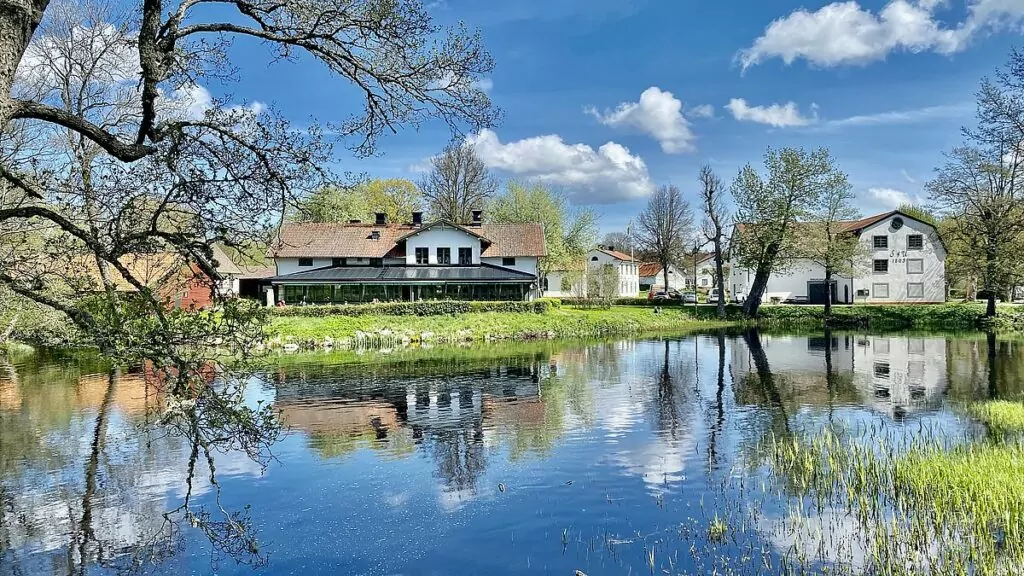
The area is fantastically beautiful, with mirrored lakes and historic buildings. Perhaps we were especially charmed by the beautiful weather, and we highly recommend a visit here on a nice day.
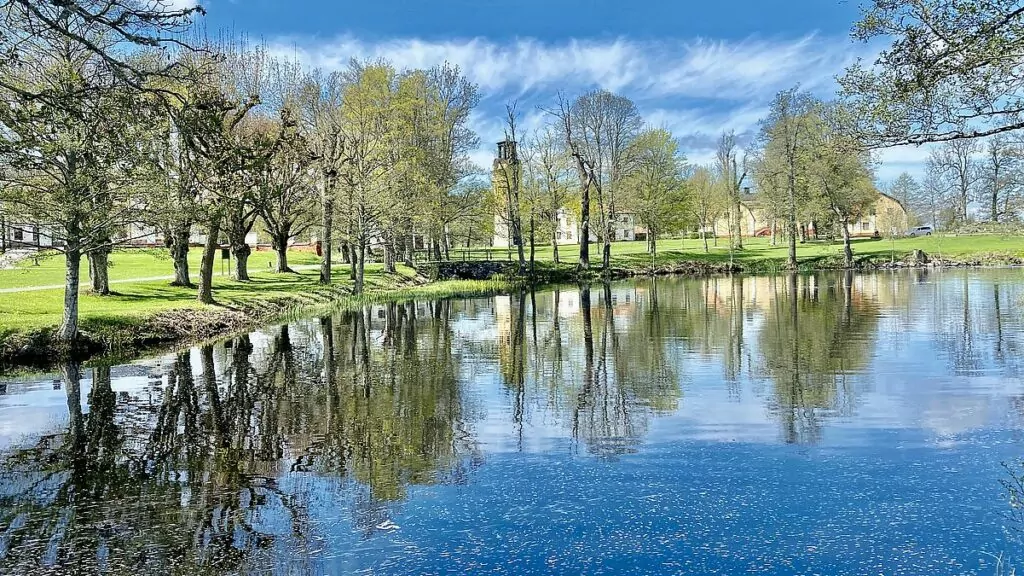
Forsmark Mill is located on the Uppland coast, about one hour south of Gävle and about two hours north of Stockholm.
Walloon mills - ironworks improved with the help of Walloons
It is not known exactly when iron production started in Forsmark, but it is believed that farmers in the area were already producing iron in the 15th century. It is known with certainty that Forsmark's mill was established by the Crown in 1570.
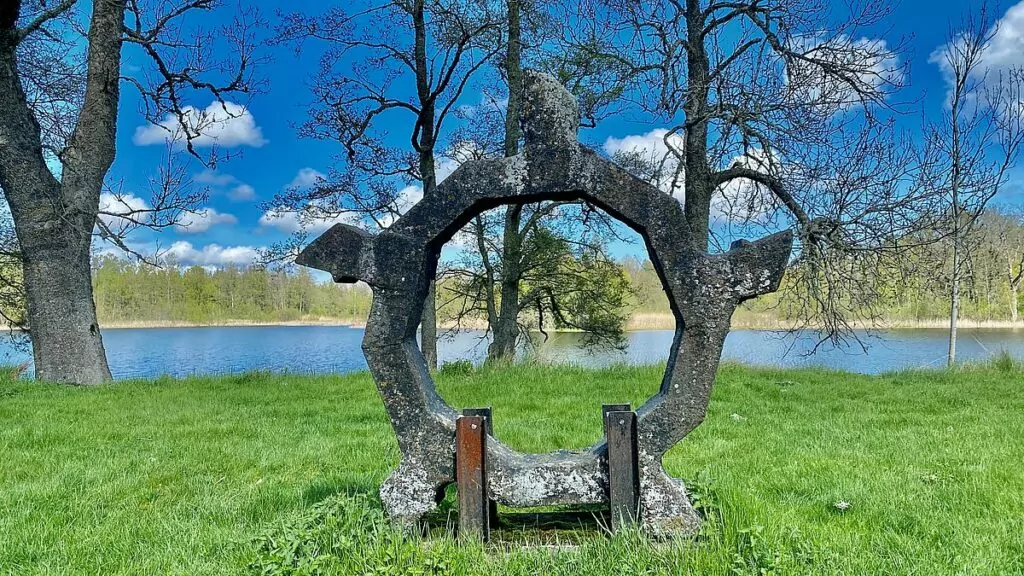
In 1626, the Walloons came to Forsmark, bringing with them new knowledge and new methods that increased production and improved quality.
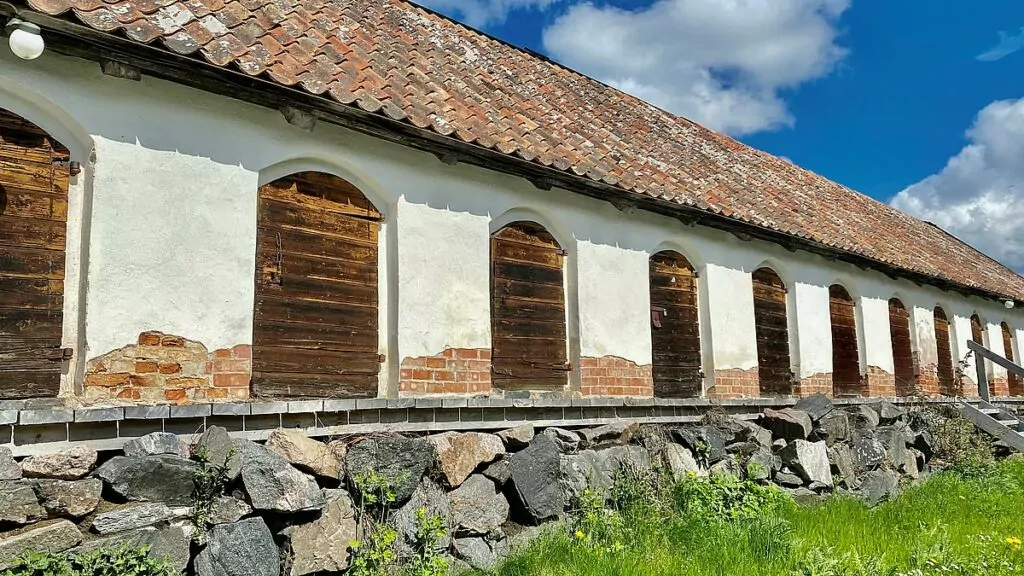
In 1719, the entire mill was burned by the Russians during the so-called 'Russian Raids', but the mill was rebuilt.
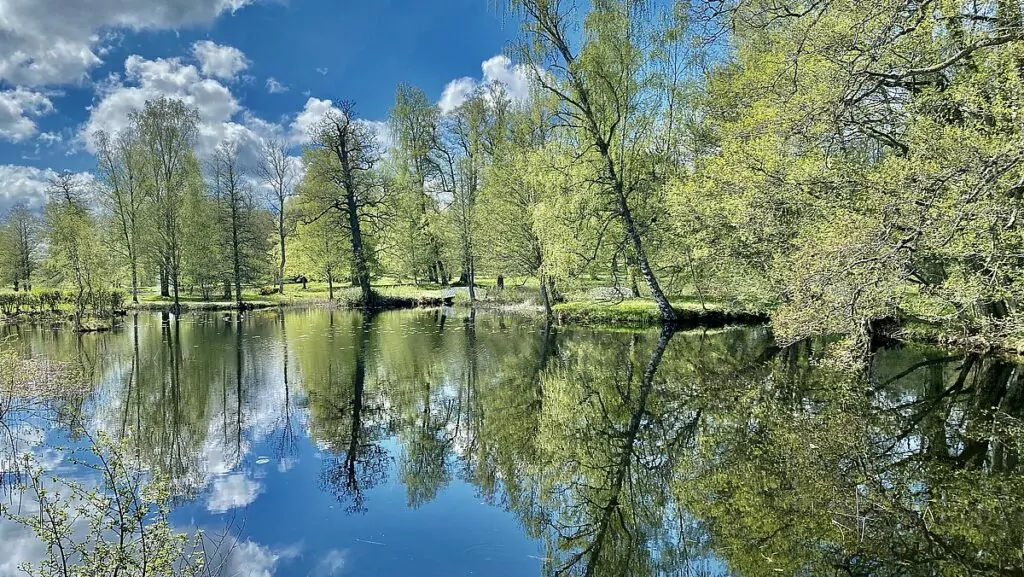
Forsmark Mill - with housing, schools and a church
It is beautiful to walk along the old mill street up to the church. Here you will find the old blacksmith's houses from the 18th century and the two schools, Charlotta's school and Teresa's school.
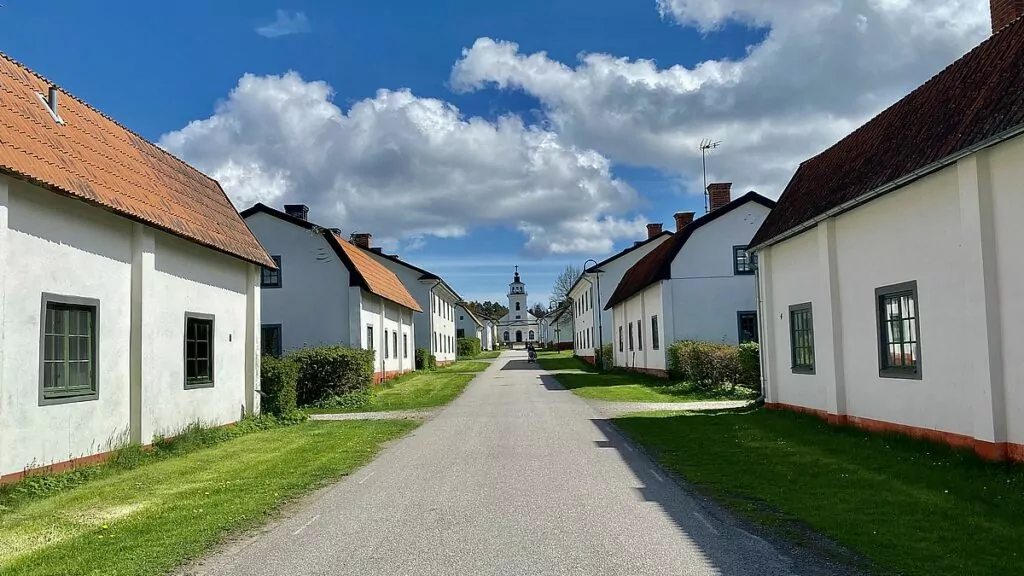
The new church in Forsmark was built between 1794 and 1800 in the late Gustavian style. The builder was Samuel af Ugglas.
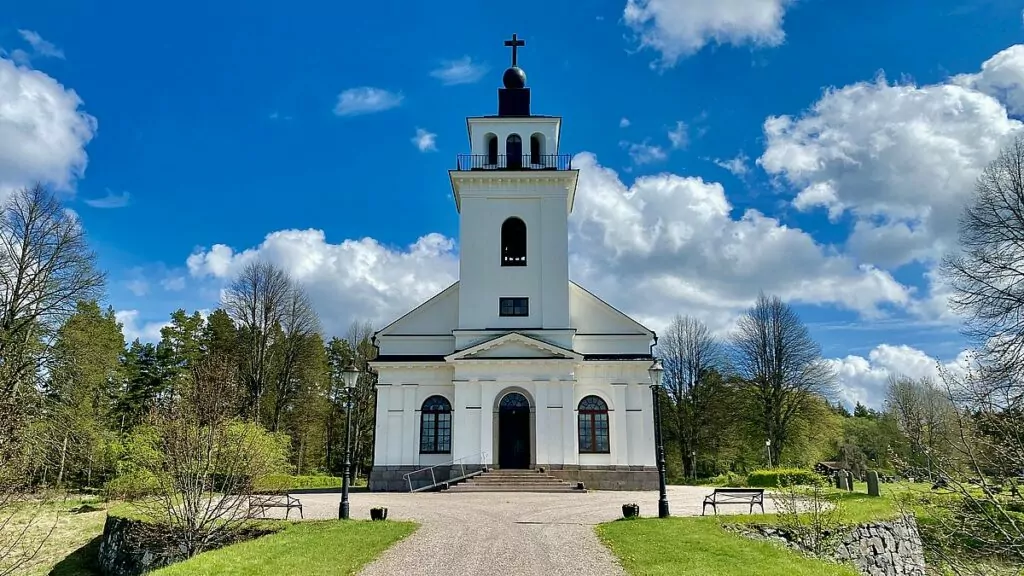
Old mansion and bell tower
The old manor house at Forsmark was completed in 1765, but it was not as grand as the neighbouring farms. It was therefore not long before a new manor house was completed.
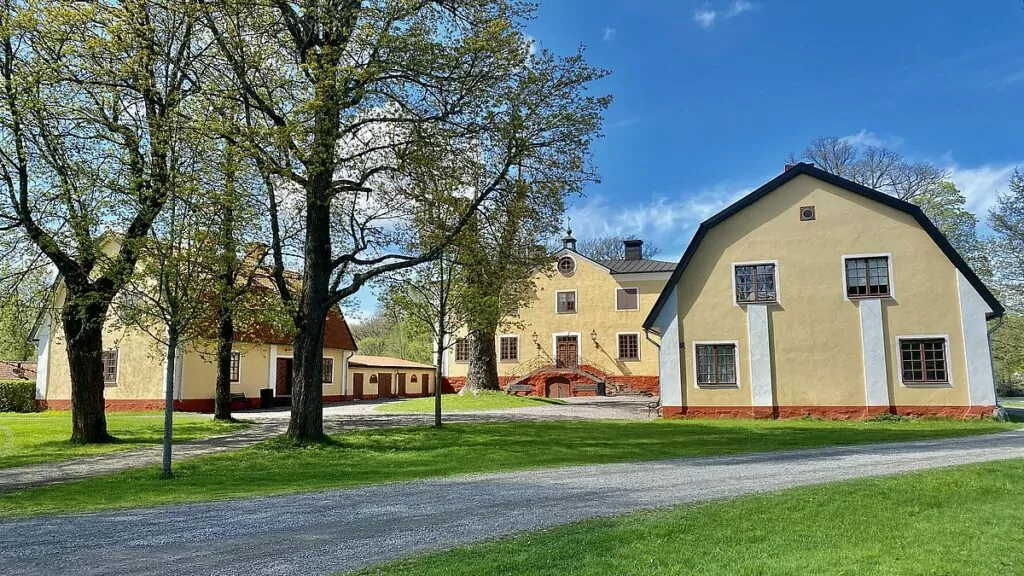
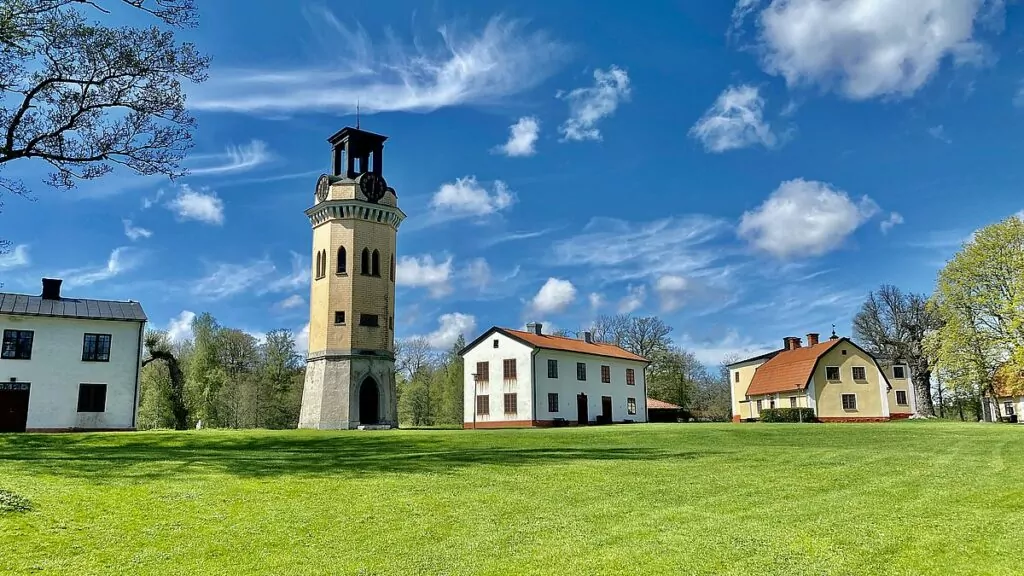
The new mansion at Forsmark Mill
The new mansion was built in 1767-1774 to the designs of court architect Jean Eric Rehn. The mansion was used by the af Ugglas family until 1980, after which it was used for the representation of Kraftbolaget.
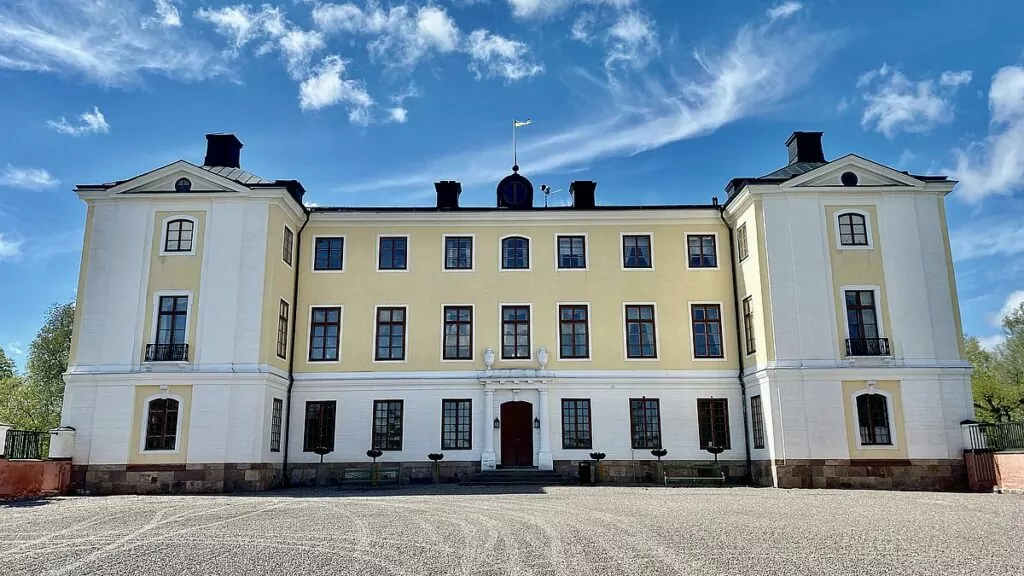
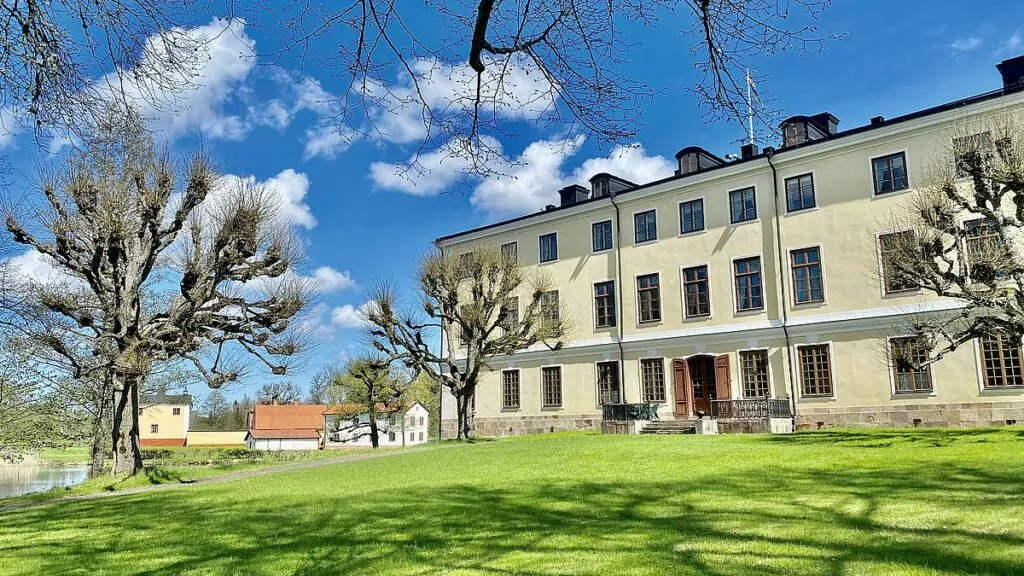
English Park
The English Park at Forsmark Mill was designed by Samuel af Ugglas in 1800. We like English parks and this one was exceptionally nice, with trees, flowers, bridges and surprises, as it should be in an English park.
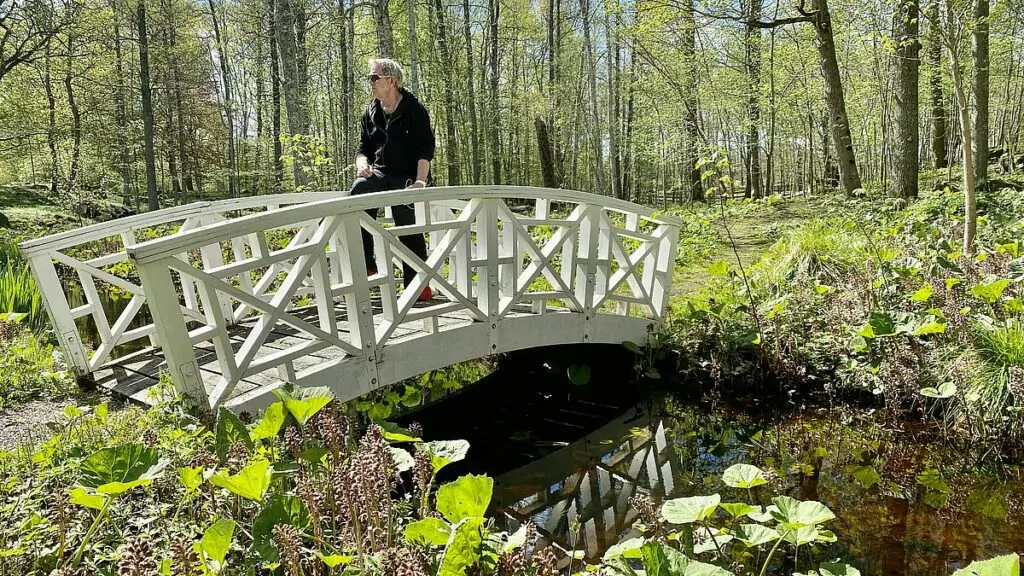
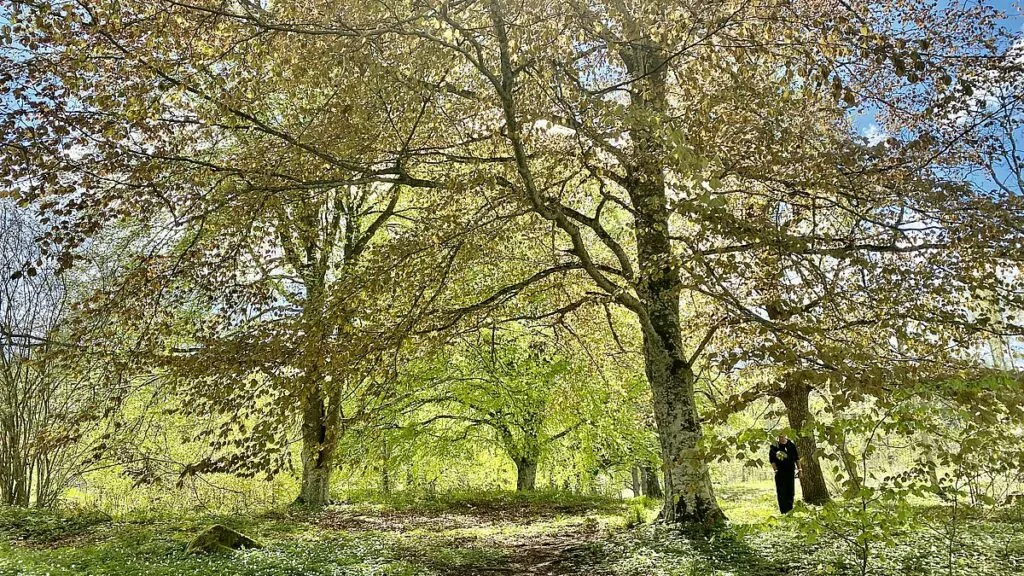
The English Park at Forsmark Mill includes the Hermit's hut, the Temple of Belisar, the Temple of Mirrors, the statue of Minerva and the aviary (birdhouse). It is really great to walk around here!
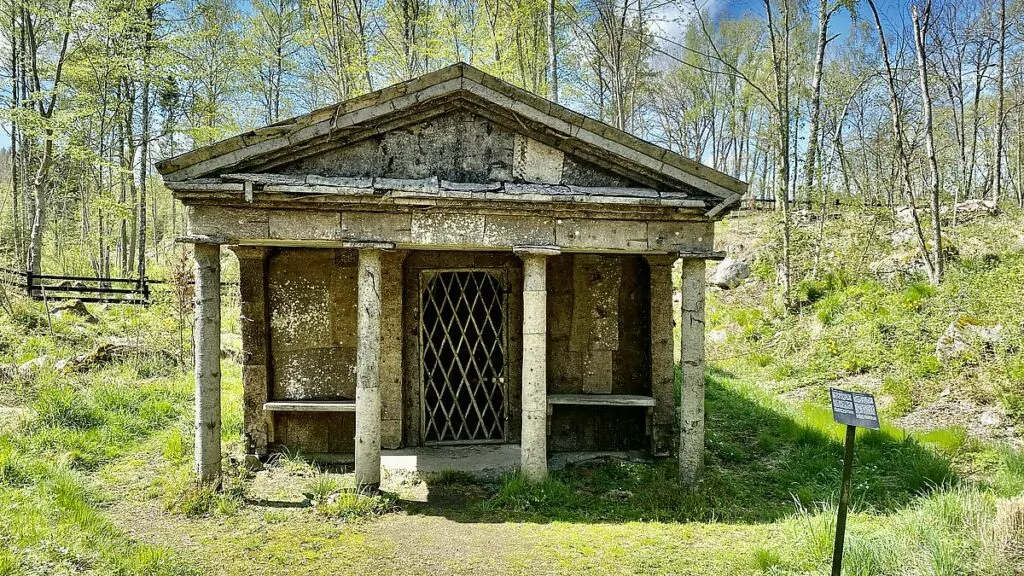
Lunch at Forsmark's Wärdshus
We ended our visit to Forsmark Mill with a lunch at the inn, and we couldn't ask for a better ending. The inn is beautifully situated by one of the lakes, and we could sit outside in the glorious spring weather.
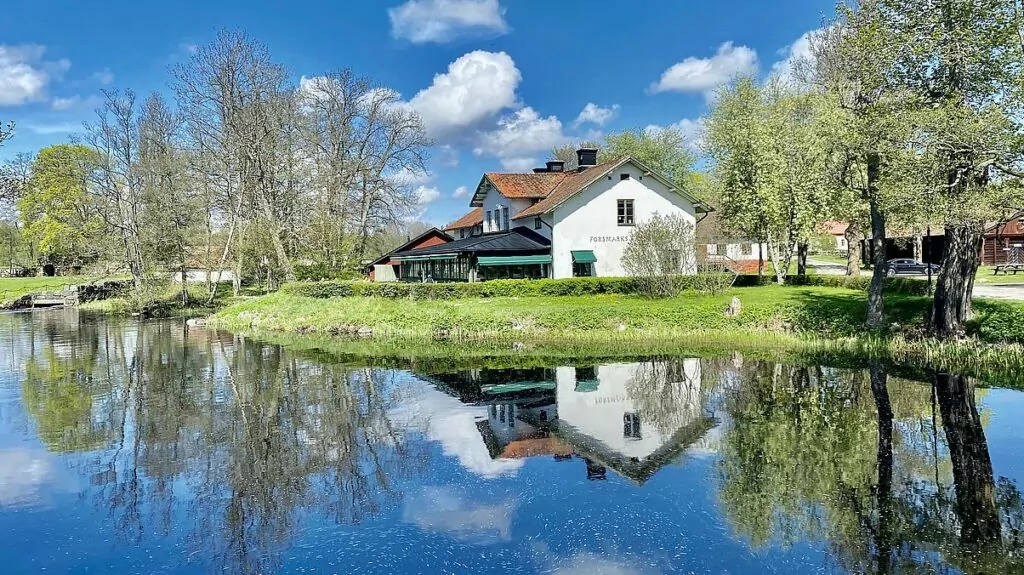
For today's lunch we had to pay 100 SEK each, which was very affordable considering that the food was well prepared and that it included bread, salad, drinks, coffee and cake, and a wonderful environment.
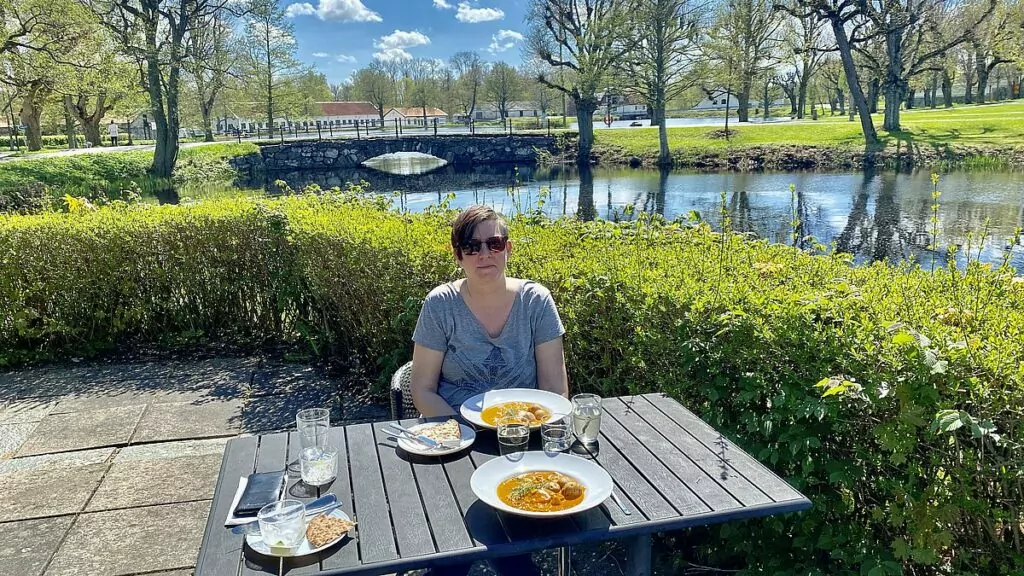
Where can you stay with your campervan?
If you are travelling by motorhome, there are nice places where you can stay along the coast. This time we stayed at the parking lot in Gudinge harbour, where we stood fantastically beautiful and peaceful. Here we paid 120 SEK for a place with electricity, but with limited service in general. Another option is to visit Ängskärs havscamping.
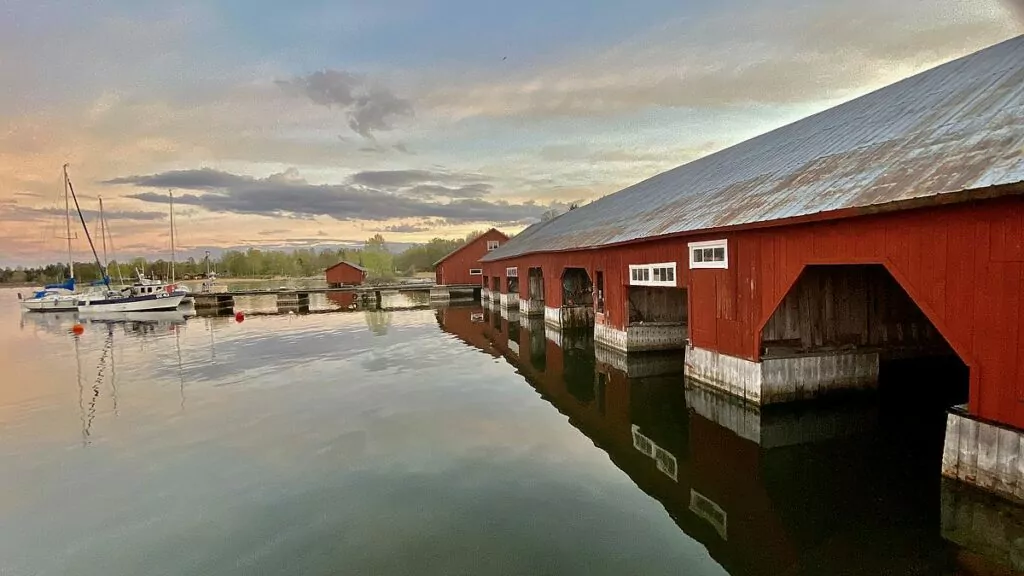
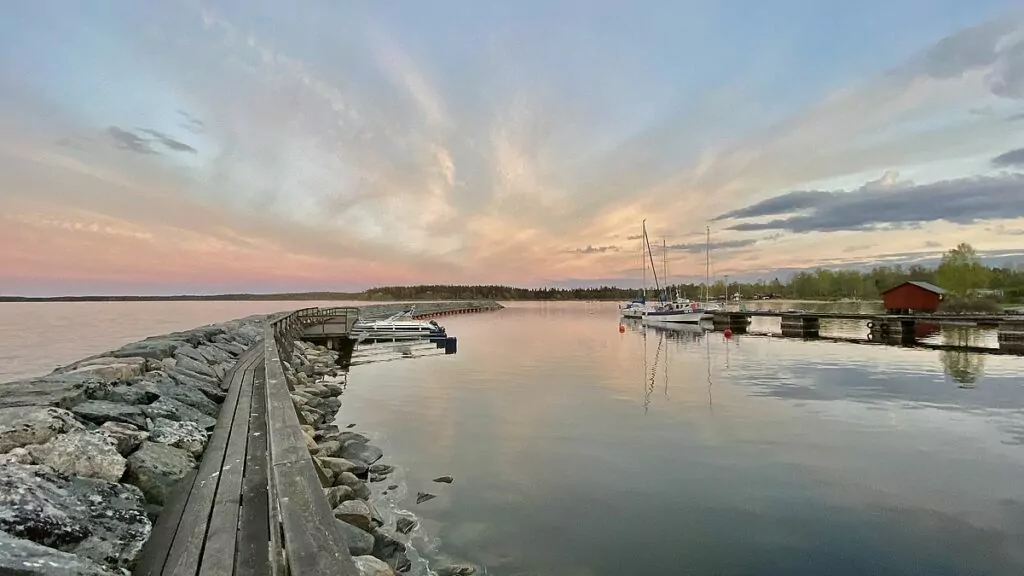
See more in the neighbourhood
In the vicinity of the Forsmark mill, there are more Vallon mills, such as Lövstabruk and Österbybruk. It is also not far from the beautiful and interesting Salsta Castle. There are also other great destinations on the east coast, such as Öregrund, Grisslehamn and Ängskärs havscamping.
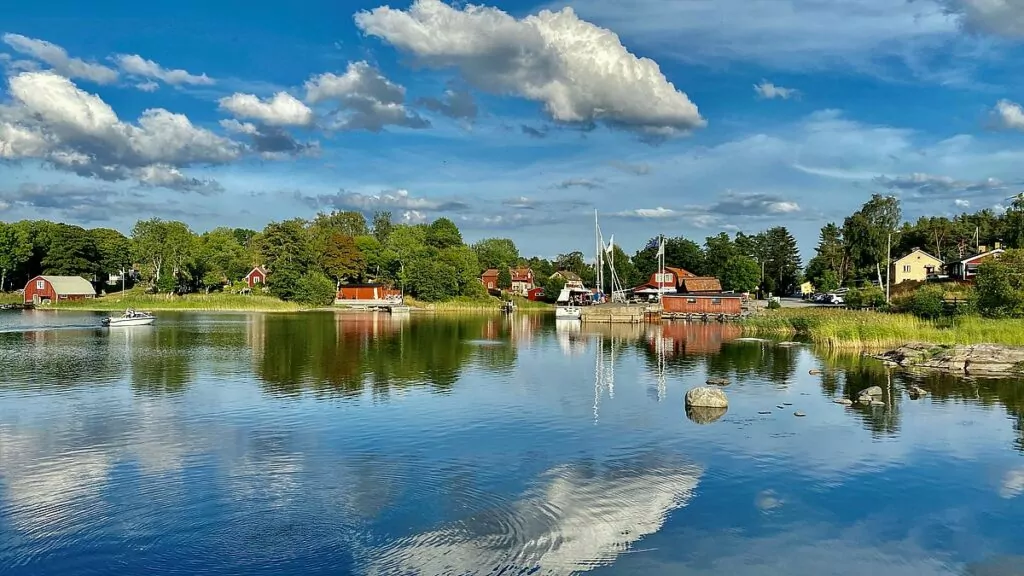
Riddarhuset in Stockholm - interesting to visit
The Riddarhuset in Stockholm is open to visitors for an hour every weekday, and making a...
30 attractions in Old Town - tourist in Stockholm
Sights in the Old Town! The old parts of Stockholm are not only charming and beautiful,...
Solna church - and the beautiful Norra begravningsplatsen cemetery
Solna Church is a nice little round church from the 12th century. Adjacent to the church is Norra begravningsplatsen, which...
Lingnåre cultural reserve - historical trails in Uppland
Lingnåre Cultural Reserve is located on the Hållnäs peninsula in the municipality of Tierp. There are currently a total of 43 cultural reserves...
Berth in Sikhjälma harbour - scenic area at Hållnäs
This motorhome weekend started with us going to a parking space in Sikhjälma harbour,...
Grisslehamn in Roslagen - 7 tips on things to do
Located on Väddö in Roslagen, Grisslehamn is a charming little town that is bustling with...
Ängskärs sea campsite in Uppland - and three caravan sites
Ängskärs havscamping is beautifully situated on the Hållnäs peninsula in north-eastern Uppland. We camped here for one day and...
Öregrund in Roslagen - tips for things to see and do
Öregrund is a real gem in Roslagen with charming alleys, beautiful old wooden houses and a...
Huvudsta farm in Solna - murder story and beautiful surroundings
Huvudsta farm in Solna is located a short walk from the marina where we live. We are...
Ulriksdal Palace and Park - Royal Palace in Solna, Sweden
Ulriksdal Palace is one of the eleven royal palaces in Sweden, and offers a...
"The whole journey" at Paul Taylor Lanthandel in Sundbyberg, Sweden.
We recently tested the 'Whole Journey' menu at the celebrity restaurant Paul Taylor Lanthandel in Sundbyberg. This is...
Vikingabyn Storholmen - open-air museum in Roslagen.
Vikingabyn Storholmen is an open-air museum beautifully situated by Lake Erken in Roslagen. For a few...
30 different things to do in Stockholm
Looking for different things to do in Stockholm? Then you've come to the right place! Here...
Skokloster Castle - magnificent baroque castle by Lake Mälaren.
Skokloster Castle is a magnificent baroque castle on Lake Mälaren. This is the largest private palace that...
Rosersberg Castle - a royal castle in Sigtuna, Sweden
Rosersberg Palace is a royal palace in Sigtuna, north of Stockholm. This castle is a...
Karlberg Castle Park - jogging trails and attractions
Karlberg Castle Park is just a few minutes' walk from where we live. Yet it took several...
Kvarngården in Knivsta - homestead with nice parking space
Kvarngården in Knivsta is a local history centre and caravan park run by Knivsta Hembygdsgille. Here...
What to do in Solna - 15 activities and experiences
What can you do in Solna? We have lived in Solna for eight years, and before...
Kungsträdgården in Stockholm - and the Makalös Palace
Kungsträdgården in Stockholm is a beautiful park where people stroll, have coffee, listen to concerts and...
Grönsöö castle in Uppland - and a cosy free camping site
Grönsöö Castle is a fine 17th century castle on the island of Grönsö in Lake Mälaren, Uppland. In the summers, the...
Marabouparken in Sundbyberg - art gallery and park hangout
Marabouparken in Sundbyberg is a park with an art centre and a large collection of sculptures. Despite...
Lövstabruk - ironworks dating back to the 16th century
Lövstabruk in Uppland is one of the so-called vallon mills in Sweden, a historic ironworks....
Pythagoras Industrial Museum in Norrtälje - step into history
The Pythagoras Industrial Museum in Norrtälje tells, in a very vivid way, about a piece of Swedish industrial history....
Things to do in Norrtälje - 11 tips for the capital of Roslagen.
What can tourists do in Norrtälje? Norrtälje is an idyllic archipelago town with beautiful old...
Drottningholm Palace in Stockholm - guide for your visit
Last weekend we visited Drottningholm Palace in Stockholm. It was a fantastic autumn weekend, and...
Rydboholm Castle in Roslagen - and the English Park
Rydboholm Castle in Roslagen is a private castle from the 16th century, and next to the castle is the...
Royal palaces in Sweden - 11 magnificent castles
Royal palaces in Sweden are the subject of today's article. Did you know that there are 11...
Väddö sea baths and camping in Roslagen
Väddö havsbad och camping på Väddö is a campsite with a sandy beach, surrounded by beautiful nature....
Gräsö in Roslagen - a scenic gem
Gräsö is a scenic island, located just outside Öregrund in Roslagen. The island is surrounded by...
Filmstaden Råsunda in Solna - 100 years of film history
Filmstaden Råsunda is currently operating as a cinema, although it is currently closed due to...
Gustavsberg in Värmdö - in the footsteps of the porcelain factory
Gustavsberg is a nice little town in the municipality of Värmdö in Stockholm, which is mainly...
Butterfly House in Haga - tropical climate, butterflies and sharks
Have you visited the Butterfly House in Haga? For us it was a long time ago, but now...
Riddarholm Church in Stockholm - the burial place of kings
Riddarholm Church is Stockholm's only surviving medieval monastery church. This magnificent building, constructed at the end of the...
Siggesta Gård in Värmdö - now with parking spaces
Siggesta Farm in Värmdö, outside Stockholm, is a rural hotel with conference facilities, outdoor activities, animals,...
Österbybruk - mansion and mill environment in Roslagen
Österbybruk is beautifully located in Roslagen and offers a beautiful manor house, historic mill environment and...
Skokloster camping - great waterfront on the Skohalvön peninsula
Skokloster camping (or Sånka camping as it seems to be called on the signs here) is located on Skohalvön...

Have you been to Forsmark Mill? How was your experience? Do you have more tips for things to see and do in the neighbourhood?
Facts about Forsmark Mill
- Address: Forsmarks Bruk 20, Östhammar
- Municipality: Östhammar municipality
- County: Uppsala County
- Landscape: Uppland
- Owners: Forsmarks Kraftgrupp AB
- Read more: You can find more information on Visit Forsmark's website.
Services and practical information
- Opening hours: See the Visit Forsmark website for up-to-date information on opening hours.
- Food service: Forsmarks Wärdshus serves lunch. Aunt Märta's Café serves light lunches and coffee.
- Activities: In the summer, there is a factory museum, experimental workshop for children and guided bus tours (currently cancelled due to the coronavirus).
Finding Forsmark Mill
- Car: The mill is located on road 76, which runs along the Uppland coast between Norrtälje and Älvkarleby.
The history of Forsmark Mill
- 15th century: The farmers in Forsmark were probably already making iron at this time.
- 1570: Forsmark Mill was established by the Crown. The ore came mainly from the Dannemora mine and it produced pig iron, bar iron and cannonballs.
- 1624: The mill was leased to Gerard de Besche and Peter Rochet.
- 1626: The poppies came to Forsmark, along with knowledge and new methods, which improved quality and increased production.
- 1646: The mill was sold to the tenants and later taken over by de Besche. At this time, iron was worth more per kilo than gold.
18th century to the present
- 1719: The mill was burned by the Russians during the so-called 'Russian ravages'. It was subsequently rebuilt.
- 1751: The mill was sold to Fran Jennings and Robert Finlay.
- 1762: Jennings became the sole owner and the mill was rebuilt with workers' housing along Bruksgatan.
- 1767-1774: The current main building was built.
- 1786: The Forsmark mill was bought by Samuel af Ugglas.
- 1800: The English Park was designed by Samuel af Ugglas.
- 19th century: In the latter part of the 19th century, iron processing in Sweden was modernised. New methods competed with craftsmen and small mills, such as Forsmark's mill.
- 1890s: Iron handling was phased out.
History of the nuclear power plant
- 1960s: A favourable attitude towards nuclear power prevailed.
- 1970s: In 1971 a licence was granted to build Forsmark's first 900 megawatt nuclear reactor. In 1973 Forsmark 2 was started and in 1976 Forsmark 3.
- 1980: Public opinion on nuclear power changed and a referendum was held, deciding to phase out nuclear power by 2010.
- 1980s: The three Forsmark reactors were commissioned. The decommissioning plans with a 2010 end date were cancelled.



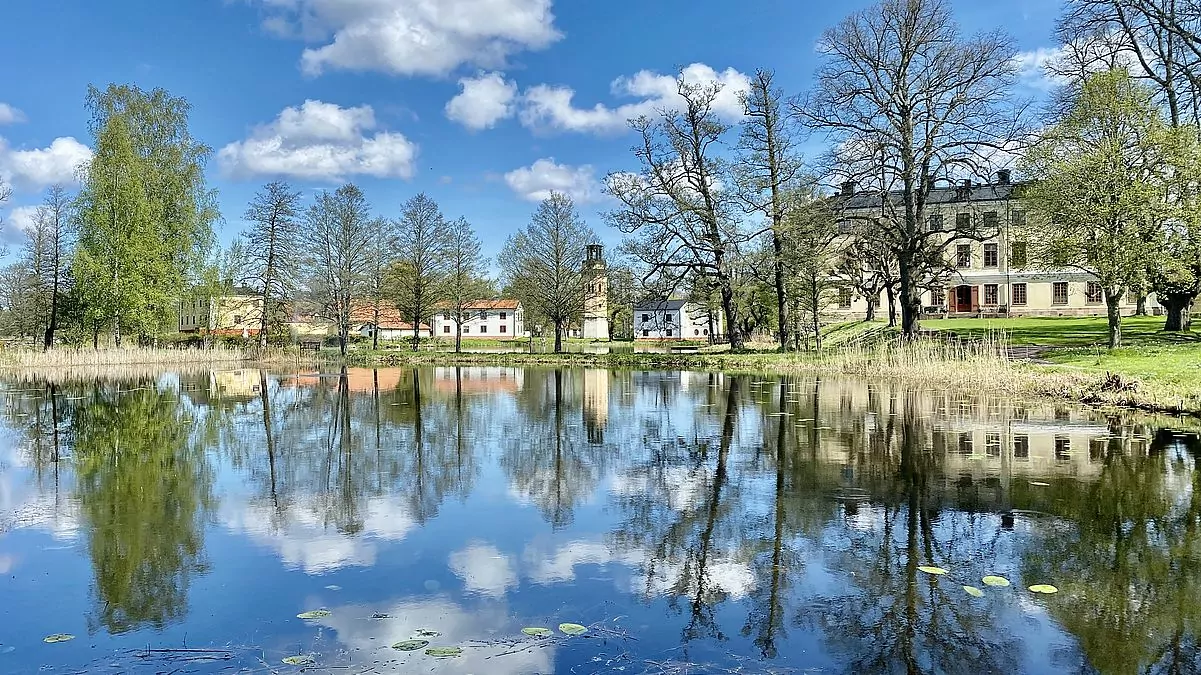






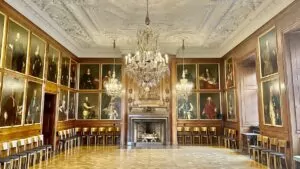
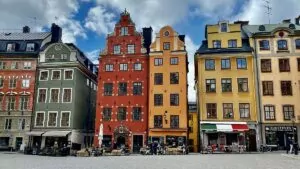
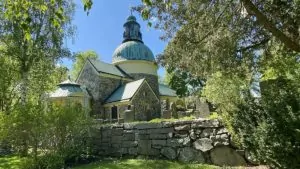
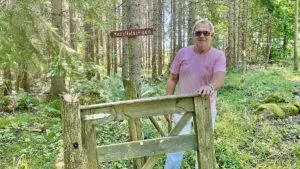
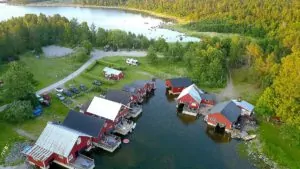
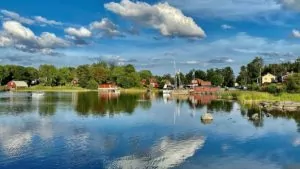
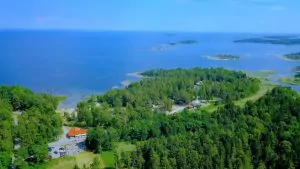
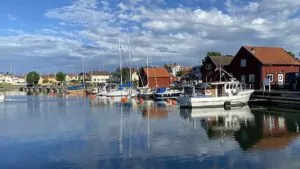
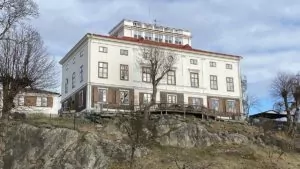
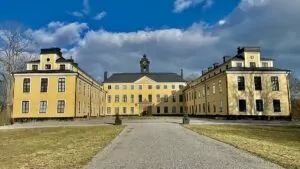

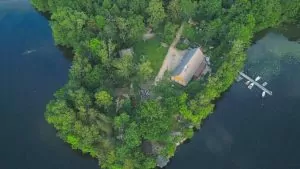

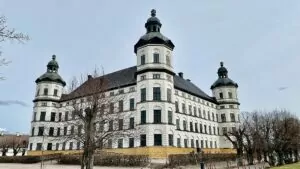
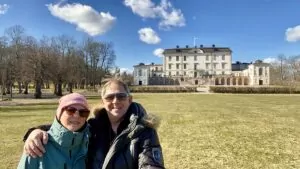
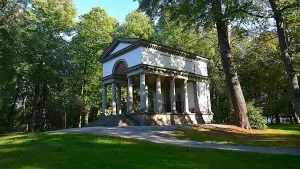
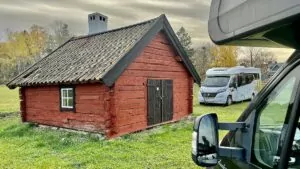
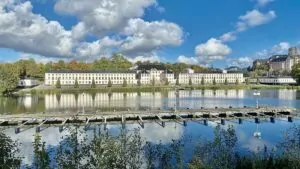
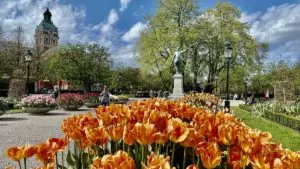
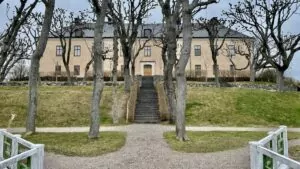
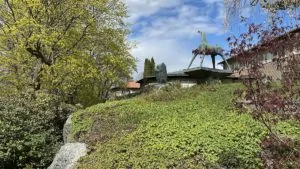
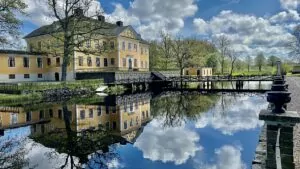
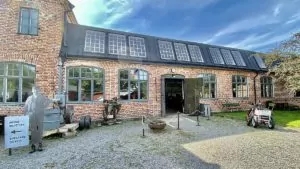
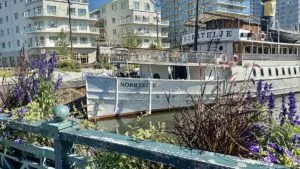
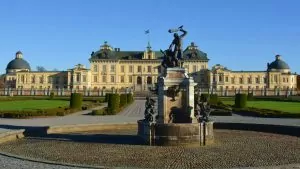
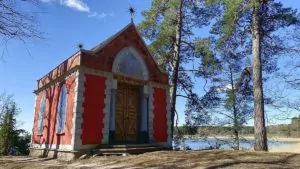
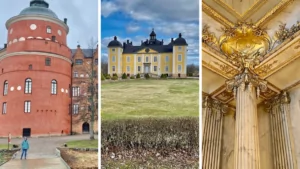
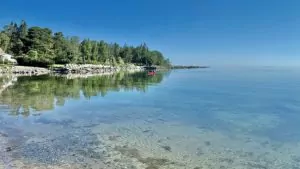
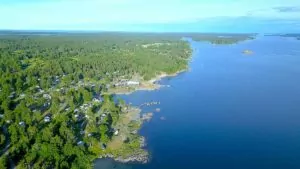
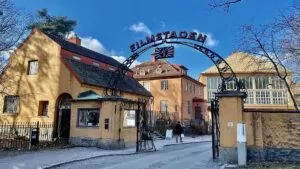
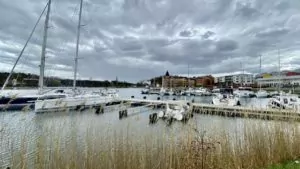
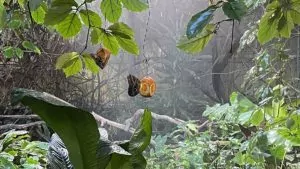
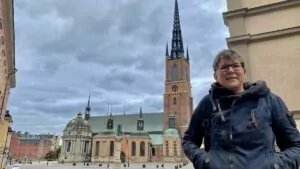
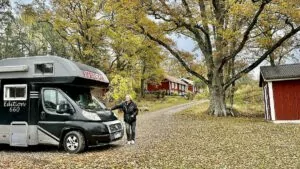
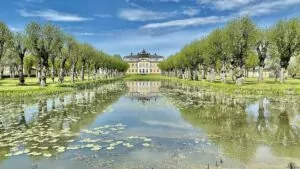
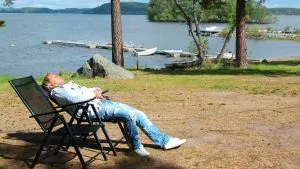
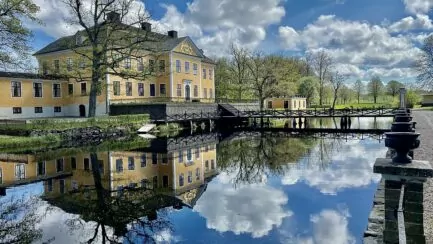
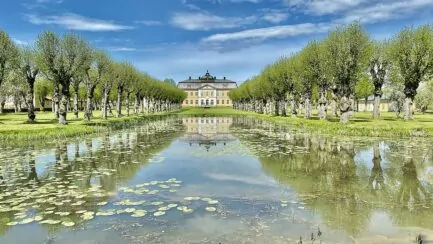
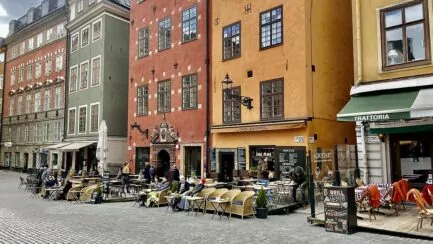



Ditte says:
Forsmark's mill is really beautiful. Have been here several times and both Forsmark and the other mill towns in Uppland are nice to visit. We have occasionally stayed at Gimo mill and then made tours from there....
Söderfors is another fine mill town.
I have also visited the nuclear power plant in Forsmark a couple of times and been on a guided tour. Very interesting, but many years ago. Guess that now in panic times it is not relevant.
Thanks for the tour and great pictures that really do justice to the Forsmark mill.
20 May 2021 - 9:32
Helena says:
Glad you were here! We certainly agree that it's beautiful. We drive in this area sometimes, as Peter's mum lives nearby, so we'll try to see more of the mills. Interesting and nice environments! Interesting that you have also been to the nuclear power plant!
20 May 2021 - 21:12
BP says:
It's so beautiful there! Oh what fantastic luck with the weather. The reflections in the "water pictures" are absolutely wonderful. Nice that the restaurant was open, so you could enjoy a lunch in the nice environment.
20 May 2021 - 20:19
Helena says:
Isn't it? Glad you like the pictures. It was really grateful to take pictures, nice environment and fantastic weather 🙂.
20 May 2021 - 21:13
Lena+in+Wales+and+Spain says:
Never been there and hardly heard of it.
Fantastic with these mill environments, having lived in one myself, but around a cotton industry and very different from this, but with some similarities.
21 May 2021 - 12:08
Lena - good for the soul says:
As a native of Sweden, I am of course familiar with the area, but have never actually been there. Wow, how nice it looked. Another destination to aim for sometime!
It is said that I have some unknown vallon in my family, like 4 or 5 generations back so it is not from the time when they started coming here. Exciting part of our Swedish history. Although it was certainly really tough to get pregnant during a not so organised life situation, if we put it that way. I guess it was like that anyway.
Hug Lena
24 May 2021 - 5:58